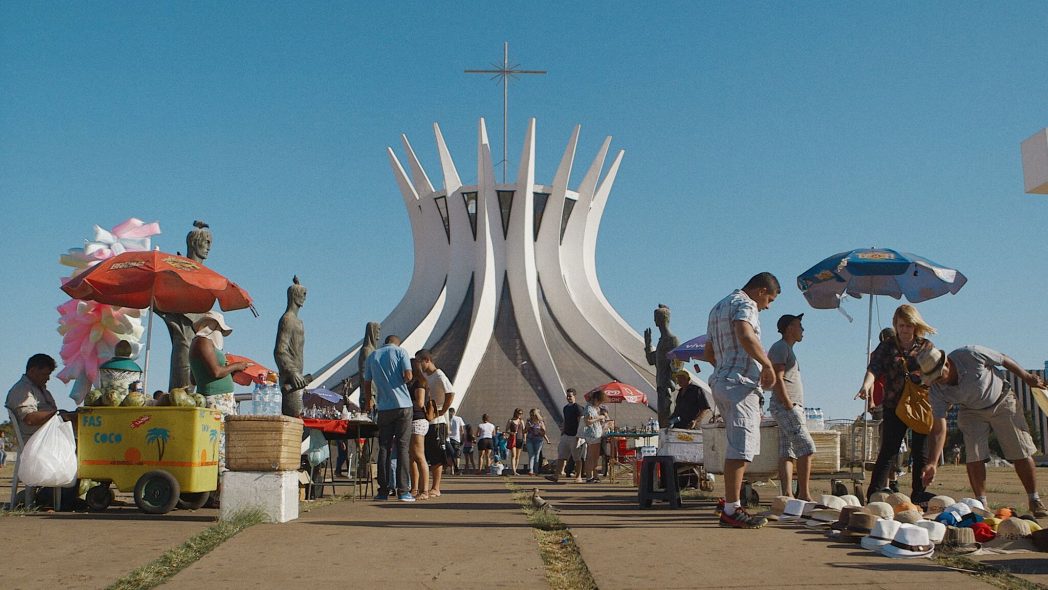
Dir: Bart Simpson | Doc | US | 90’
In Brasilia: Life After Design, Bart Simpson takes a novel approach in exploring the social, economic and political aftermath of modernist ‘starchitect’ Oscar Niemeyer’s inventive urban planning project that created Brazil’s new national capital in 1960, now a UNESCO World Heritage Site. Located on high plateau in the country’s centre-western region, it comprises a metropolitan area now estimated to be the Latin American country’s third most populous. It is divided into various economic districts (Banking, Embassy etc) it moved the seat of government away from Rio de Janeiro and into a more central location. The film asks the question? Can you create a perfect city from scratch? What emerges is interesting. Although you can in theory, when the human element is added, it doesn’t always go according to plan.
Niemeyer and his partner Costa wanted to create a utopian city, designing Brasilia on a cross-axial grid and allowing for generous green areas where mid-sized trees where planted into aligned avenues to give a ‘ready made’ environment from the outset. A Monumental Axis accommodated government, monuments and institutions and a Residential Axis housed the inhabitants. Costa’s intention with housing superblocks was to have small self-contained and self-sufficient neighborhoods and uniform buildings with apartments of two or three different categories, where he hope to facilitate the integration of upper and middle classes sharing the same residential area. But sadly Brasilia has not been the success story originally intended for various reasons.
And this is in part due to the region’s hostile landscape. Niemeyer and Costa worked with government support to create the ‘Plano Piloto’, an innovative built environment intended to reshape the way people interact and behave within its confines. Rather than an organic city, Brasilia was imposed on its terrain, over a period five years. And despite its sophisticated architecture and status as a capital city, all the problems of contemporary Brazilian society soon surfaced there despite best laid plans – from unemployment to crime and social divide. Brasilia has failed to accommodate its burgeoning population.
So how is life after design for the people that live there? We meet a street vendor who is struggling to find a clientele due to the vast open boulevards; a mother whose job is a difficult commute to from her kids’ school; economic instability and social alienation and a general lack of neighbourly-ness induced by the built environment, despite high quality architecture. A building can look good but be impractical or hostile to live in. So a success on the drawing board, can actually be a disaster when it hits the reality of the streets.
Stunningly shot on the widescreen and in intimate close-up, Simpson’s documentary is chockfull of sophisticated facades and impressive building designs, capturing the city’s geometric shapes, pleasing symmetry and glamorous skylines. But on a personal level there are clearly concerns for those who have made it their home. Simpson’s film offers fascinating insight for travellers, historians, designers and those interested in its themes, although thr lack of a distinct dramatic arc may make it less absorbing for mainstream viewers. MT
SCREENING DURING THE EAST END FILM FESTIVAL 2018
https://vimeo.com/213263235